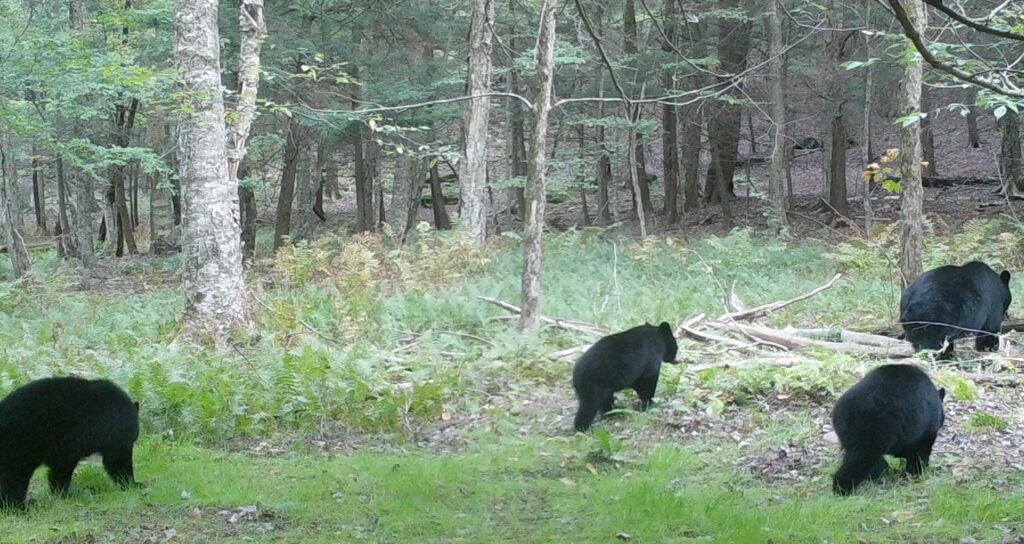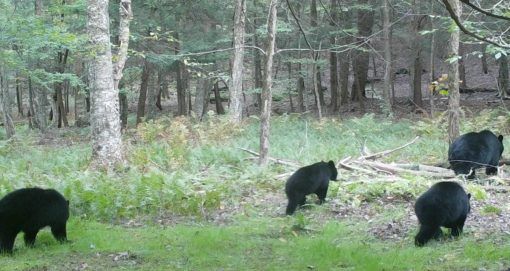by Barbara Nimri Aziz Counterpunch.org October 2018
My editor at Natural History Magazine once remarked how, whenever their cover features a bear, sales rise. An Asiatic sun bear, a young brown cub bear, a sunbathing polar bear or a menacing American grizzly; it doesn’t matter. People like bears.
Occasional attacks on humans and the aversion of many people to any form of wildlife hunting notwithstanding, bears are irresistible. However vulnerable we may be, humans can’t shake our unparalleled attraction to these bulky, really quite graceless creatures.

We are smitten not only by pictures of bears; we’re enthralled by the sight of live bears. Whether on two legs grabbing berries or bounding across meadows on all fours, bears in the wild are especially mesmerizing; more than deer who, although not necessarily faster than bears, quickly disappear into the foliage. Our ursine creatures seem to prefer open spaces, even during daylight hours. A spectacle for any passerby.
I’m talking personally only about black bears here; they’re the ones I encounter in my neighborhood.
This year we’ve seen more than usual wandering close to our homes. And we don’t live in Montana or Alaska where grizzlies roam. I’m in upstate New York, hardly two hours drive from New York City with its all-night sidewalk cafes and 24-hour home deliveries!
My Catskill neighborhood proudly identifies itself as trout country. But our bears are not here to catch fish. Fields and forests are their habitant. Our bears are all black, usually not more than 300 pounds (they can go up to 500). And frankly, they’re common. They are often sauntering from yard to yard in search of food; or they’re simply curious, appearing to be in no hurry at all. The wildlife service says our region has abundant natural food sources for bears. But I suspect that the growing number of apiaries cultivated by retirees who moved here from the city draw bears into our villages. Last spring one was shot by a neighbor while it ravaged his dozen beehives.
Do you know bears have their very own adjective? Ursine. Cool. And their own candies:–gummy bears. Rather pricey varieties too. Commercial spin-offs exploiting our affection for bears are legendary. And they’ll continue. Nearby in Pennsylvania, for example, bears are a lure for the Milford annual film festival www.blackbearfilm.com. (No bear films; only the wooden sculpture outside the theater is as close as a bear gets to that event.)
Bear hunting is reportedly important to our economy. It’s part of the state’s tourism pitch, promoted by the Department of Environmental Conservation www.wildlife@dec.ny.gov . The 2018 hunting season is still underway; in 2017 though, 1,420 New York black bears were killed, with the heaviest harvest in counties around me: 151 in Delaware; 147 in Sullivan; and (closer to NYC) 167 in Ulster County. This, out of an estimated state population of 6,000-8,000. http://www.dec.ny.gov/animals/6960.html Nationwide, black bears number around 900,000, http://www.bearsmart.com/about-bears/north-americas-bears/ a population that is increasing annually.
Anecdotally, from sightings around my own neighborhood, black bears seem plentiful. In August a mid-size ursine creature with a long neck trotted casually along the riverfront of four coterminous family lawns; two days later a mother and three cubs had to be chased off a nearby porch. On a morning walk last month I initially took the black, furry creature sauntering down the middle of the road ahead of me to be a lost dog. It seemed unconcerned about whom it might encounter. “His mother mustn’t be far away; keep your distance”, I cautioned myself. Earlier in the season a big adult followed by a smaller bear scampered across the road in front of me towards an open meadow. My most memorable sighting occurred at midday when I was on the highway en route home from the city; I slowed to watch a huge black animal followed by two smaller ones galloping towards me. They crossed two highway lanes, the grass strip between, then two more lanes onto the verge above me. It must have been autumn because their black coats glistened in the sun, and under their fur, their fat-laden shoulders and haunches shook as they leapt along.
There must be many bears roaming around at nighttime here; I often see fresh bear scat in the grass, easy to distinguish from what deer leave. “A bear’s presence is easy to determine”, a longtime resident instructed; “its droppings emit an overpowering stink”. I am reminded how fondly we regard our bears when I and friends pause in our local library to admire a photo just posted. It’s a family of four bears—local inhabitants. A surge of envy overtook us when the owner of the pictures identified the three cubs as same ones she photographed last May when they were hardly larger than puppies.

